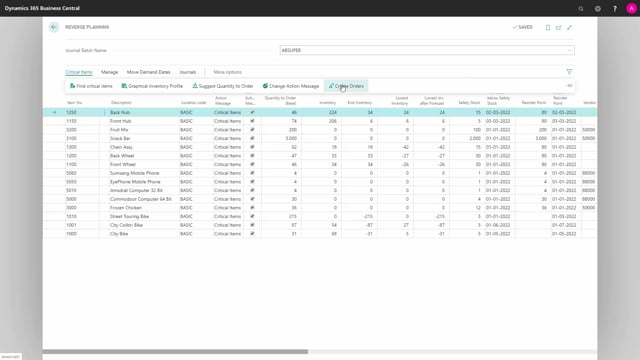
Let me give you a quick introduction to the two primary functions of the Reverse Planning journal.
So, the Reverse Planning journal can do two major things.
One will be to calculate critical items, the other to move demand dates.
Calculating critical items, I can find the critical items with a lot of different parameters that we run through in other videos.
Creating drawing inventory profile for each item, figuring out if it’s going below the criteria I have set, and then I could suggest quantity to orders based on different parameters, and it updates the quantity to order lines.
I can select all of them, and then while creating orders, the lines will be moved into a quick journal, which is a copy of the planning worksheet with the action messages new, and from here I could carry out action message like normally in a planning worksheet or requisition worksheet.
So, this is one functionality.
Let me just delete those lines.
The other primary function is to remove demand dates when it doesn’t get better on the supply side.
So, do we have to move some of our demands? We could calculate bottom up in a low-level code order to figure out if we have orders that we need to move.
In this example, if I scroll right, I can see we’re talking about two different orders, one production orders.
It’s actually the same order, but it’s the different component that postpones the date, and that’s a sales order.
So, it’s basically two different orders, and I could checkmark the action messages like this.
And when I carry out actions, the sales order will be moved into a sales handling journal, as you can see here, suggesting a new due date, and the production order will be moved into the quick journal as a reschedule.
So, I could move many production order and many sales order in one go if I had many lines to move.
So, this is a way of moving order dates on demand orders.
Those are the two primary purposes of having Reverse Planning.

